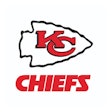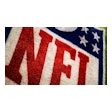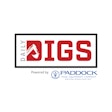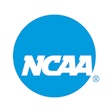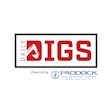Assuming demand is there, adding a second ice sheet can boost a rink's fortunes.
 ICE TIME TO BURNOzaukee County, Wis., residents stand to benefit from free access to the ice center addition.
ICE TIME TO BURNOzaukee County, Wis., residents stand to benefit from free access to the ice center addition.On the surface, you might think things are going poorly for the Ozaukee Youth Hockey Association in Mequon, Wis. The group earlier this year was given a county-run rink that was mired in debt, and is trying to raise funds for an addition to it in an economic atmosphere that's toxic to nonprofits, amid rumors of local hockey participation dropping by as much as 20 percent.
But, in fact, things could scarcely be better for Ozaukee hockey. Ozaukee County not only gave the group the Ozaukee Ice Center, but it agreed to let the association pay off its $382,345 debt by giving free ice time to county residents. Fundraising for the 43,542-square-foot expansion (from one competition ice sheet to two) is going well, reports Jack Furey, the association's president. Moreover, Furey says, the rink's neighbors and various volunteers are coming through big time to help get the project off the ground, and the declining participation has struck only other area rinks - not theirs.
"I hear grumbling about hockey numbers being down elsewhere, but we're maintaining our constituent level," says Furey. "We're breaking even with the one sheet we have, and with two sheets, we'll have a chance to make money. One-sheet rinks can just struggle."
This is the second time that the Ozaukee Youth Hockey Association has spearheaded construction on the Ozaukee Ice Center; in 1996, the group raised $1.8 million to build the facility, after which they turned it over to the county to operate. (Ozaukee County loaned the group $500,000 and paid $300,000 for site improvements.) Although space was included for an eventual expansion, a second sheet was not considered in the initial program, partially because of the additional capital expense but also, Furey recalls, because there was a lot of uncertainty about the market, even in hockey-friendly Wisconsin. "It was right around the time that the Pettit National Ice Center's two-sheet facility opened," he says of the U.S. Olympic training facility located in nearby West Allis, "and hockey was so new to the area that no one knew what to expect. There were only three rinks in the area at that time, and now we have something like 12."
Over the years, Furey says, county officials grew weary of its maintenance responsibilities, as well as Furey's frequent visits to agitate for a second ice sheet. "I think they were tired of me, because I wouldn't leave them alone," he says. "I continually came to them, asking them for dollars. It was written in the bylaws when the rink was originally built that they were responsible for maintenance. Well, as the facility got older, problems started cropping up, and I continually came to them with bills for fixing things."
The second-sheet plan, meanwhile, was going nowhere. As long as the county owned the building, donors were less likely to open their pocketbooks. "That was a huge hurdle," Furey says. "People pay their taxes, why do they want to give money to the county? They'd say, 'The county should be stepping up to build this facility for the residents.'"
That obstacle disappeared in March, when the association took ownership. Fundraising continues, the city's department of community development is in the process of signing off on the plan, civil engineering has been completed, and the project will break ground as soon as all the money is in place. As with the original construction, the community is rallying to support the association. Furey estimates he has saved at least $300,000 through in-kind donations. Carlson Tool and Manufacturing, which has a plant next door to the center and donated the land for the center 12 years ago, came through again when parking issues surfaced. Carlson gave the association some more of its land to accommodate a lot expansion and retention ponds, while another business across the street donated the use of 50 spaces for overflow parking. Says Furey, "Our neighbors have been incredibly supportive."
Of the operational costs associated with ice rinks, staffing is the largest, at around 60 percent. In a typical rink project, an additional sheet doubles the potential revenue without doubling the costs associated with construction and operation.
Jim Maland, a principal with St. Paul, Minn.-based engineering and architecture firm Bonestroo, notes the importance of performing a feasibility study that can demonstrate demand within the community. "Assuming there is adequate market to support the second sheet, generally what we've found is that with second, third, fourth sheets, the core personnel is still capable of handling the brunt of an additional sheet with some small additions in staff," Maland says. "If the lobby can support bigger crowds, that can be left alone, and support spaces don't need to be doubled. One resurfacer can go back and forth between the two sheets. Usually, a rink just keeps getting more profitable as more sheets are added - again, assuming you have demand for ice time."
Concordia University men's and women's teams, three for local high school teams and five for youth squads. He sees revenues being boosted by the presence of so many competitive programs, as well as by the enhanced possibility of staging lucrative hockey events. Added to that strong foundation, Furey sees the county's requirement that the association provide 400 hours of free ice time per year to the community as a golden opportunity to keep the pipeline of players flowing. "One of the biggest problems I see is that we've got teams playing from four in the morning until late at night, and we've cut public ice time back so far that the community doesn't get to use the rink," he says. "To keep participation high in ice sports, you have to get the public interested from the beginning. That's another way that having two sheets is going to help out. We'll be able to increase open time while still serving all our regular teams and groups."
Furey doesn't see that as a potential problem, even though the Ozaukee project is adding significantly to support spaces, including 10 new locker rooms - two for the The association's web site still lists August 2010 as the addition's completion date, even with no soil turned over. "That's what we're working toward, and I'm leaving it there until somebody tells me otherwise," Furey says. "We're to the point where there's no turning back. It's going to happen."


















